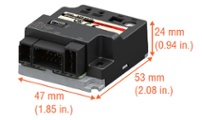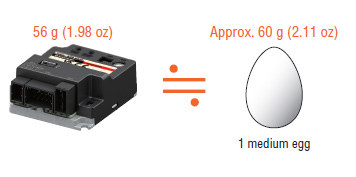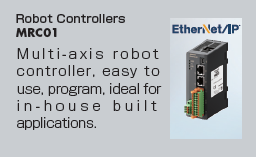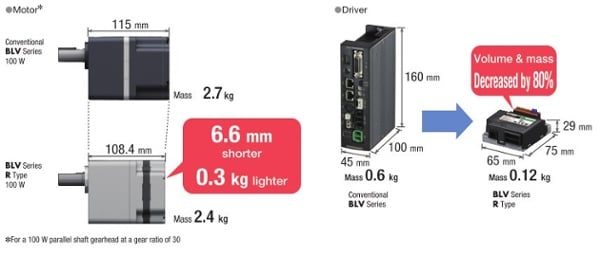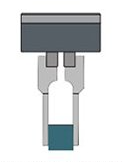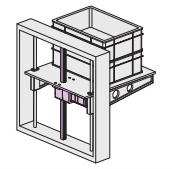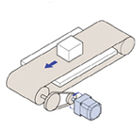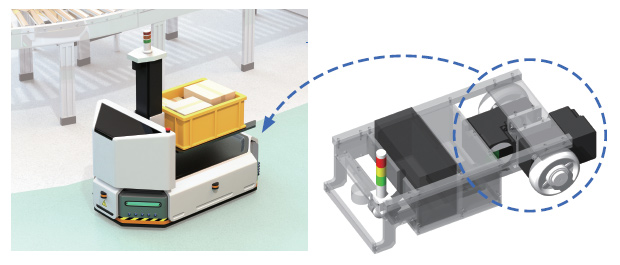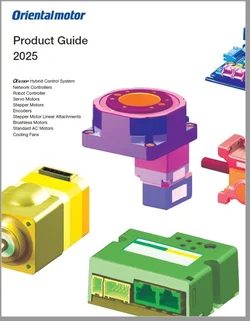Modular automation is the next phase of factory automation where a production line can be separated into mobile modules and can be quickly reconfigured for different purposes. This article explains the benefits of modular automation and shows how smaller, lighter, and battery-driven motors can help.

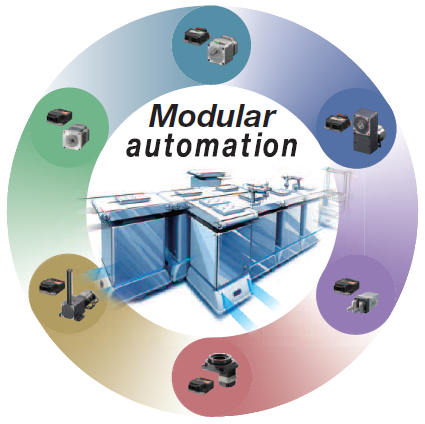
In today's world, there's a growing demand for the capability to immediately respond to changes in the manufacturing environment, such as labor shortages, natural disasters, and disruptions in global trade.
Many companies have begun implementing automation to increase efficiency and safety, such as transporting parts and working in hazardous areas. It also seems that more and more companies are working on modularization, which allows a production line to be reconfigured according to the need.
The key to solving these challenges is the realization of "layout-free" automated equipment and production lines, which is the basis for "modular automation".
What is Modular Automation?
The word, "modular", means smaller parts of a whole that can be arranged differently. It can be applied to a production line, a manufacturing plant, or products.
The word, "automation", means something that is done by itself with minimal human command.
"Modular automation" is the next phase of factory automation where a production line can be separated into mobile modules and can be quickly reconfigured for different purposes.
Imagine each module as a Lego piece on wheels. Each module would carry equipment to serve a different purpose and can be easily integrated with another module. For example, a production line that typically packages apples can be reconfigured to package pineapples.
By enabling the same production line to serve different needs, the factory can respond immediately to changes in demand in real-time. The highest efficiency can be achieved when all production equipment is modularized and self-propelled by autonomous mobile robots that communicate wirelessly and are controlled by AI.
Benefits of Modular Automation
The flexibility of repurposing the same production line for different processes can improve productivity while saving space, energy, and labor. The results are more cost savings, faster time-to-market, and less downtime.
|
Benefits of Modular Automation: ● Free layout ● Productivity improvement ● High-mix low-volume production ● Resolving labor shortage ● Space-saving ● Energy-saving ● Cost-saving ● Faster time-to-market |
Helpful for Industries Requiring Small Batches: • Food & beverage • Chemicals • Pharmaceuticals • Medical • Textiles • Marine • Printing ● Packaging |
There are two types of modular automation: semi-mobile and fully-mobile.
Semi-Mobile Modular Automation
In semi-mobile modular automation, there are both fixed and modular components, and parts are transported automatically from module to module by mobile robots.
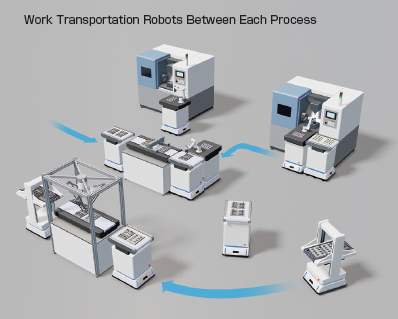
Semi-mobile modular automation lines have certain modules fixed to the floor. However, by integrating mobile robots with certain conveyor modules, mobile parts transfer becomes possible, and production efficiency can be improved by eliminating the manual transfer of parts between different modules. A mobile robot with a small turning radius can work in a limited space and improve space efficiency.
Fully-Mobile Modular Automation
In fully-mobile modular automation, every module is powered by mobile robots, so each module can move and reconfigure itself automatically.
From Layout A to Layout B

By modularizing and mobilizing the entire production line, flexibility is maximized as more layouts can be customized for different needs.
The table below shows a comparison between "semi-mobile" and "fully-mobile" modular automation. The U-shaped line in "semi-mobile" modular automation is fixed and cannot be moved. As you can see, the modular production line method (fully-mobile) can be more flexible and can even add additional units to serve more needs.
|
Semi-Mobile
U-line+Modular production line |
Fully-Mobile
Modular production line
|
|---|---|
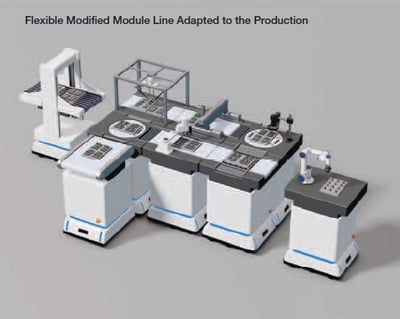 |
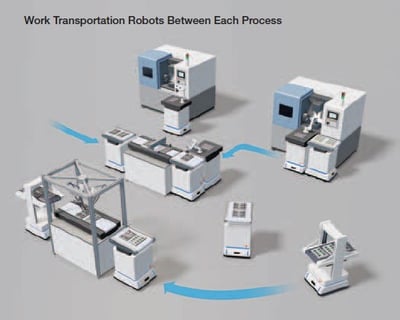 |
|
8 types 9 units
|
11 units of 8 types (2 units added due to line change)
|
|
Line flow
|
Line flow
|
| ① Lifting (parts loading) ② Parallel (parts mounted) ③ X-YZ (adhesive application) ④ Turntable (visual inspection) ⑤ Vertical articulated (machined parts mounted) ⑥ Cross roller conveyor (part orientation change) ⑦ Scalar (screw ) Tightening) ④ Turntable (changing the direction of parts) ⑧ Conveyor (carrying out parts) |
① Lifting (parts loading)
④ Turntable (parts orientation change) ②Parallel (parts mounting )
⑥Cross roller conveyor (parts orientation change)
③X-YZ (adhesive application ) ⑥Cross roller conveyor (parts orientation change)
④ Turntable (visual inspection) ⑧ Conveyor (parts transfer) ⑤ Vertical articulation (mounted with processed parts) ⑦ Scalar (screw tightening) ⑧ Conveyor (parts carry-out) |
Support Modular Automation with
Modular Automation Compatible Products
- For engineers that want to step into modular automation, it is best to consider battery-powered, smaller, lighter, and smarter motors and drivers. Standardizing on the same product technology for all axes of motion can also shorten the learning curve. Manufacturers have already begun to offer products that fit the "modular" requirement.
"Modular automation compatible products" are a group of products with the common concept of battery drive, small size, and lightweight. They are ideal for mounting on self-propelled devices and mobile equipment and contribute to the realization of modular automation. Similar to a "modular" production line, modular automation compatible motors, actuators, and drivers can also be mixed and matched for different purposes.
At this time, Oriental Motor's modular automation compatible products consist of the AlphaStep AZ Series family of DC-input stepper motors, linear actuators, hollow rotary actuators, and mini drivers as well as the BLV Series R Type DC-input brushless motors and drivers. Supported industrial communication protocols include EtherNet/IP, EtherCAT, Profinet, CANopen, Mechatrolink, CC-Link, SSCNetIII/H, and Modbus RTU.
|
For Positioning: AZ Series Absolute Stepper Motors or Actuators with mini Driver Oriental Motor's AlphaStep product family is now equipped with a battery-less mechanical absolute encoder. In addition, the AZ Series mini driver has been designed to be small and lightweight, freeing up valuable cabinet space. Combine it with the wide product breadth of the AlphaStep AZ Series and related products.
|
||
|
For Speed Control or Basic Positioning: BLV Series R Type Brushless Motor and Compact Driver Oriental Motor's BLV Series recently expanded to the "R Type", which includes a slimmer brushless motor and a much smaller driver that accepts battery power. Features and functions are kept from the original BLV Series, such as ramp operation and low battery operation. |
Product Utilization Examples with Modular Automation Compatible Products
| Articulated Arm Type Transportation Robots |
Lifting and Lowering Type Transportation Robots | Conveyor Type Transportation Robots |
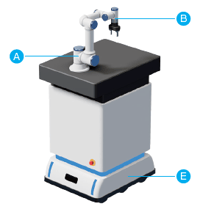 |
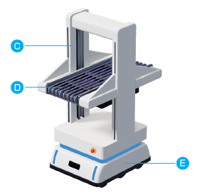 |
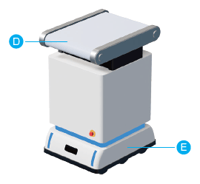 |
|
|
AZ Series Stepper Motor (with mini Driver) |
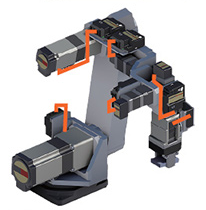 |
|
|
|
EH Series Gripper (with mini Driver) |
|
|
|
|
|
L Series Rack & Pinion System (with mini Driver) |
|
|
|
|
BLV Series R Type Brushless Motor & Driver |
|
|
|
|
|
|
|
|
|



